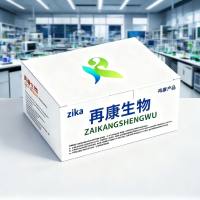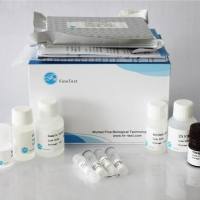A Competitive ELISA to Detect Brevetoxins from Karenia brevis (FormerlyGymnodinium breve) in Seawater, Shellfish, and Mammalian Body Fluid
互联网
内容简介:
We developed a competitive enzyme-linked immunosorbent assay (ELISA) to analyze brevetoxins,using goat anti-brevetoxin antibodies obtained after immunization with keyhole limpet hemocyanin-brevetoxin conjugates, in combination with a three-step signal amplification process. Theprocedure, which used secondary biotinylated antibodies, streptavidine-horseradish peroxidaseconjugate, and chromogenic enzyme substrate, was useful in reducing nonspecific backgroundsignals commonly observed with complex matrices. This competitive ELISA detected brevetoxinsin seawater, shellfish extract and homogenate, and mammalian body fluid such as urine andserum without pretreatment, dilution, or purification. We investigated the application of thistechnique for shellfish monitoring by spiking shellfish meat with brevetoxins and by analyzingoysters from two commercial shellfish beds in Florida that were exposed to a bloom of Kareniabrevis (formerly Gymnodinium breve). We performed brevetoxin analysis of shellfish extracts andhomogenates by ELISA and compared it with the mouse bioassay and receptor binding assay. Thedetection limit for brevetoxins in spiked oysters was 2.5 μg/100 g shellfish meat. This assayappears to be a useful tool for neurotoxic shellfish poisoning monitoring in shellfish and seawater,and for mammalian exposure diagnostics, and significantly reduces the time required for analyses.Key words: antibody, brevetoxin, detection, ELISA, immunoassay, neurotoxic shellfish poisoning,PbTx, seawater, serum, shellfish, urine. Environ Health Perspect 110:179–185 (2002). [Online17 January 2002]
点击下面的链接查看全文:









